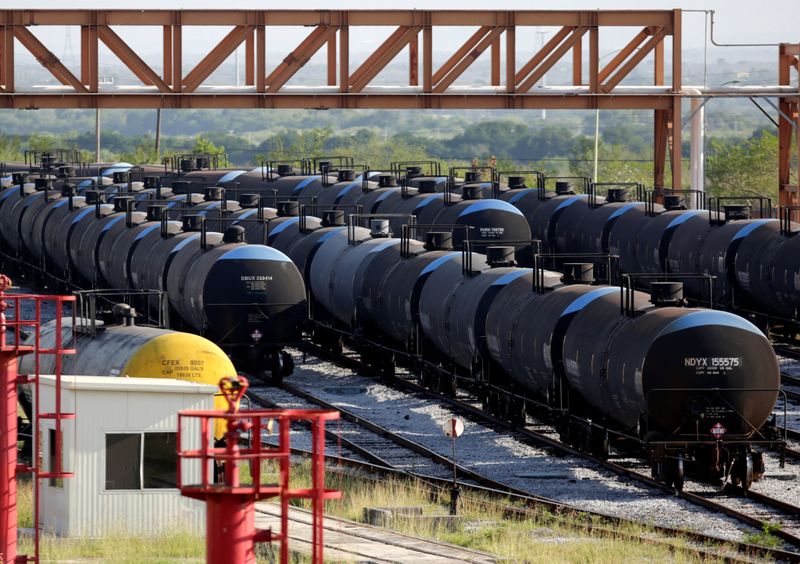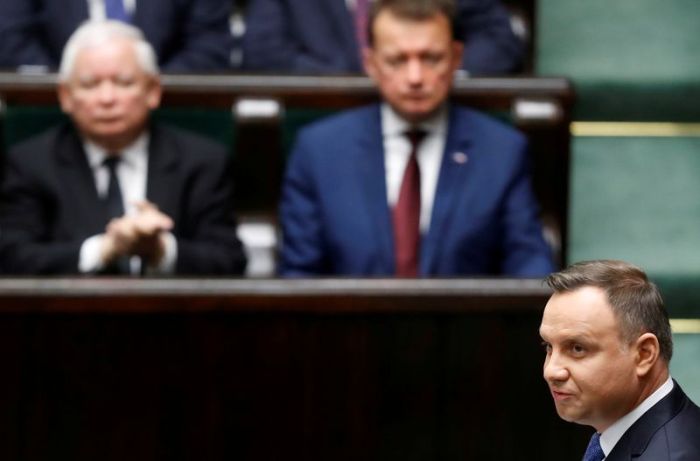BRASILIA (Reuters) – Capital flight from Latin America’s oil-producing nations is nearing record levels as the collapse in oil prices makes global investors even more risk averse during the coronavirus pandemic.
Equity and debt markets in Mexico, Brazil and Colombia have experienced historic outflows in recent weeks, while Ecuador, in particular, is exposed to a potentially ruinous fall in oil-related export and tax revenues.
Data from the Washington-based Institute of International Finance and major banks show a notable pick-up in portfolio outflows from the region’s main oil-producing countries in recent weeks.
Not all these outflows stem directly from oil price moves, but stocks and bonds in state-controlled producers like Petróleos Mexicanos [PEMX.UL], or Pemex; Colombia’s Ecopetrol and Petroleo Brasileiro SA, or Petrobras, have fallen significantly.
With the May front-month WTI crude future contract going as low as minus $40 a barrel the day before expiry, overseas investors are likely to pull out even more cash in the coming weeks, analysts said.
“The risk of further non-resident capital outflows in oil exporter countries in Latin America is on the rise … and it could happen quite fast,” said Martin Castellano, head of Latin American research at the IIF.
“These countries are particularly vulnerable to further capital outflows as a result of still-significant fiscal dependence. On top of the straightforward impact on direct investment in the medium-term, portfolio investment will also suffer,” he said.
Below is a snapshot of the latest portfolio flows for Brazil, Mexico and Colombia, and the darkening fiscal outlook for Ecuador.
(GRAPHIC: https://fingfx.thomsonreuters.com/gfx/editorcharts/oakvedjbprd/index.html)
MEXICO
Preliminary IIF figures show foreigners pulled $5.15 billion out of bond funds in March, the most since the data series began in 2009. Debt funds have posted outflows for seven weeks in a row, and although the pace is slowing, the country’s economic and financial outlook is deteriorating rapidly.
(GRAPHIC: Mexico bond flows – https://fingfx.thomsonreuters.com/gfx/mkt/xlbpgqykpqd/IIFMexico.png)
Ratings agency Moody’s cut Pemex’s credit ratings to ‘junk’ status, meaning investors mandated to hold investment-grade assets will have to dump Pemex bonds. This forced selling could be large, with analysts at Citi putting it at $7 billion to $10 billion by the end of this month.
“Mexico … remains uniquely vulnerable. Capital continues to leave the country,” said Standard Chartered’s Ilya Gofshteyn. “Forced liquidation of Mexican assets, or anticipation of it, would put additional pressure on the Mexican peso, and the magnitude of this liquidation could prove substantial.”
Citi economists this week slashed their 2020 forecast for Mexican growth to -9.0% from -5.2%.
COLOMBIA
Preliminary IIF figures show that portfolio outflows last month, comprising debt and equities, totaled $604 million, the third biggest outflow in 20 years.
(GRAPHIC: Colombia portfolio flows – https://fingfx.thomsonreuters.com/gfx/mkt/xklvyxokpgd/IIFColombia.png)
Analysis from Citi shows that ‘real money’ investors, such as pension finds and insurance funds that typically have a longer-term horizon, accelerated their selling of the Colombian peso in the week to April 17.
The accumulated selling was the fastest in over a year, the data showed.
Morgan Stanley strategists tracking positioning and flows in 17 emerging countries’ sovereign bonds note that investors in March cut their holdings in seven of them, five of which are major oil-producers. The 0.7% reduction in exposure to Colombian bonds was the third largest of all.
Bank of America Merrill Lynch has recommended its clients reduce Colombia dollar bond positions to underweight, citing growing risks to their investment grade rating.
Ecopetrol said a month ago, before the latest oil price slump, that it would cut 2020 investment by $1.2 billion to between $3.3 and $4.3 billion. Fitch downgraded the company earlier this month.
BRAZIL
Preliminary IIF figures show a $13.8 billion equity outflow in the January-March period. That exceeds the $13.1 billion from August 2008 to February 2009, and was the biggest outflow since the IIF began tracking the data in 2000.
(GRAPHIC: Brazil equity flows – https://fingfx.thomsonreuters.com/gfx/mkt/bdwpkondpmn/IIFBrazil.png)
Central bank President Roberto Campos Neto has said this capital flight stung policymakers into selling dollars to slow the real’s depreciation and taking measures to provide the financial system with ample credit and liquidity.
The impact has been limited, at least on the exchange rate, which is down 26% this year and hit a record low 5.46 per dollar on Thursday. Petrobras preferred shares are down 45% this year, underperforming the benchmark Bovespa which is down 30%.
Morgan Stanley strategists note that Brazil, after South Africa, suffered the second-largest reduction in investors’ holdings relative to benchmark weightings last month among the flows and positioning data of 17 emerging countries they track.
ECUADOR
Portfolio flows in and out of the Andean nation are tiny. But the oil price fall will have a huge impact on the dollarized country’s finances, which were already at breaking point.
Oil exports last year were $8.35 billion, accounting for 37% of all goods exports, but that is falling. According to Barclays, first-quarter oil exports were $1.69 billion, or 32% of the total, and that will fall to $956 million, or a 21% share, in the second quarter.
Most sovereign bondholders have agreed to the government delaying interest payments until July, and ratings agency S&P Global recently lowered its sovereign credit rating to ‘D’ – default.
(Reporting by Jamie McGeever; Graphics by Stefanie Eschenbacher in Mexico City; Editing by Christian Plumb and Richard Chang)
























